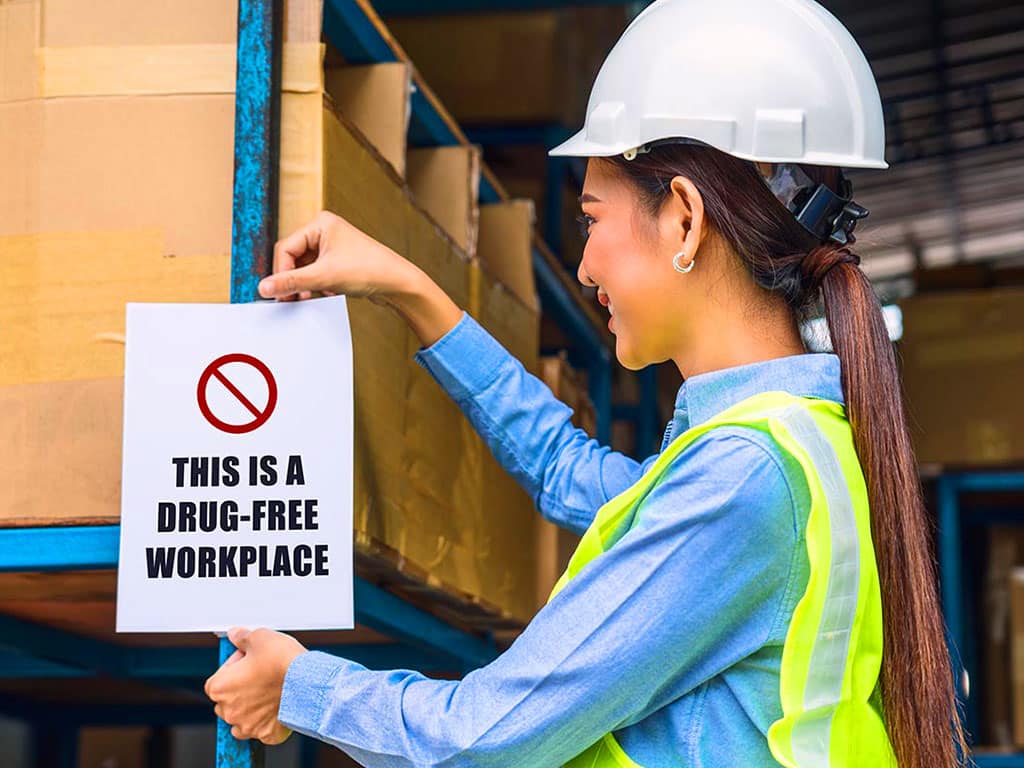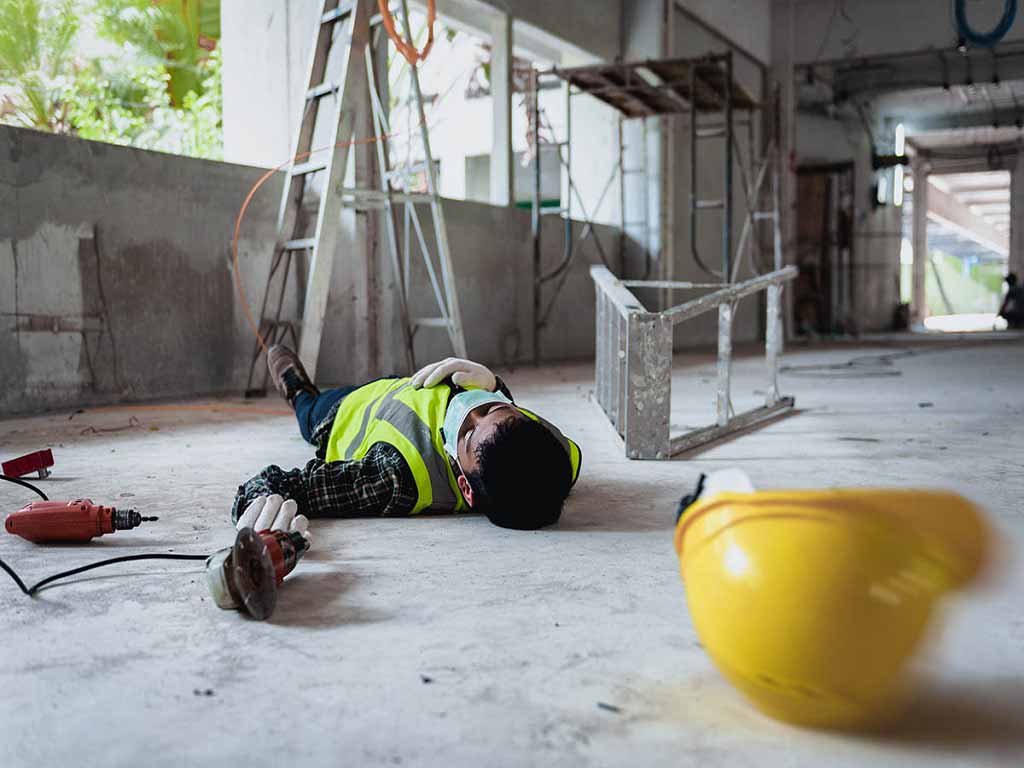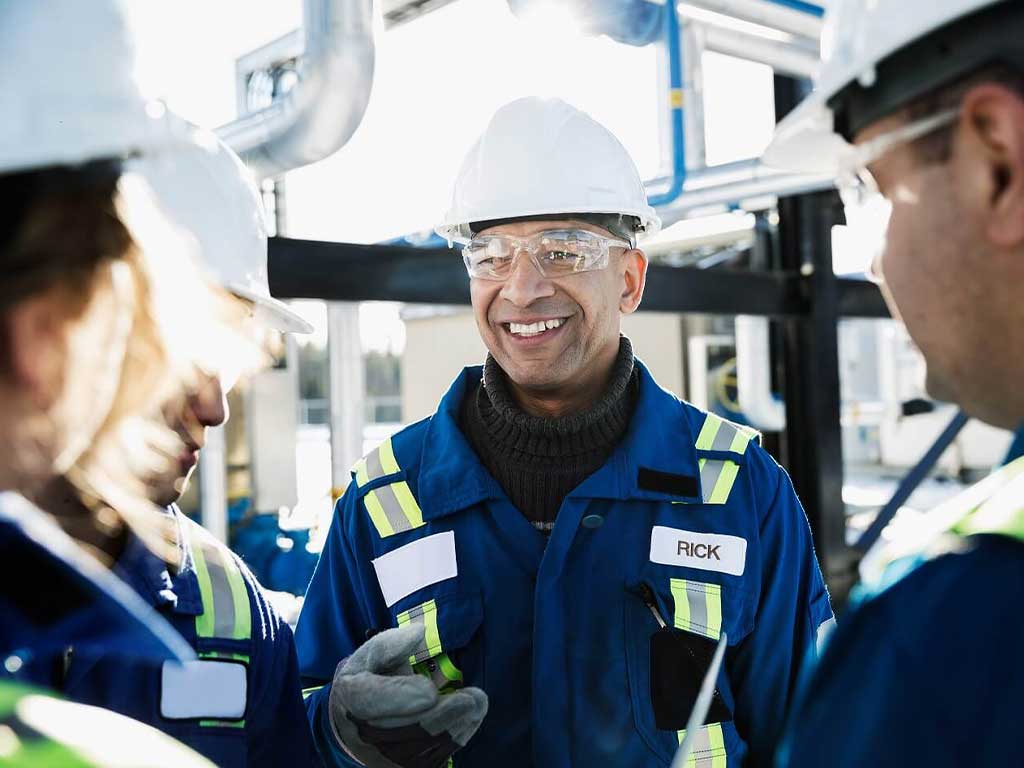Workplace Drug and Alcohol Testing Procedure: The Need to Know
18 April, 2024

Due to the demanding work environment, it is crucial for companies to maintain a safe and productive workplace. One way to ensure this is by implementing a workplace drug and alcohol testing procedure. It involves screening individuals for the presence of alcohol and illegal drugs in their system. It helps employers identify employees who are posing safety risks. In addition, companies follow strict protocols when implementing these tests. It is to obtain accurate results and prevent legal liabilities.
Individuals working under the influence of alcohol or drugs can have serious consequences. It can compromise the safety of other employees, decrease productivity, and create strained relationships. Substance abuse can lead to workplace accidents, injuries, and even fatalities. Therefore, employers are responsible for maintaining a safe and healthy work environment. In this article, we will explore the importance of drug and alcohol testing, the different testing scenarios, the types of methods, and legal considerations.
Jump to a Section:
- Importance of Workplace Drug and Alcohol Testing Procedures
- Pre-Employment Workplace Drug and Alcohol Testing Procedure
- Reasonable Suspicion Workplace Drug and Alcohol Testing Procedure
- Post-Accident Workplace Drug and Alcohol Testing Procedure
- Random Workplace Drug and Alcohol Testing Procedure
- Blanket/Annual Workplace Drug and Alcohol Testing Procedure
- Return-to-Duty Workplace Drug and Alcohol Testing Procedure
- Workplace Drug and Alcohol Testing Procedure – Can Employees Refuse to Get Tested?
- Workplace Drug and Alcohol Testing Procedure – Types of Testing Methods
- Workplace Drug and Alcohol Testing Procedure – Legal Requirements
Importance of Workplace Drug and Alcohol Testing Procedures
A comprehensive workplace drug and alcohol testing procedure is vital for maintaining a safe environment. It ensures that all employees are fit to work and does not pose safety hazards. Clean and sober workers are less likely to cause accidents and injuries due to impaired judgment and coordination. By identifying impaired employees, employers can address any safety issues.
A clear workplace policy also helps deter substance abuse disorders. It communicates to employees that alcohol and illegal drug use will not be tolerated. Thus, individuals are less likely to engage in substance use. Additionally, it sets acceptable standards of employee behaviour and work performance. In return, it promotes a culture of safety, accountability, and integrity.
Starting a testing regime also allows companies to comply with legal requirements. Some workplaces require drug and alcohol testing as part of their safety programs and industrial agreements. This is especially true for safety-sensitive industries like mining, construction, and transportation. Adhering to these regulations is not only crucial for avoiding fines and legal consequences but also for maintaining credibility.
Top Reasons for Implementation
- Safety: Employers can ensure that all workers are in a healthy condition. It minimises the risk of accidents and injuries due to substance impairment.
- Prevention of substance abuse: Drug and alcohol abuse can have detrimental effects on individuals and their ability to perform their jobs effectively. By implementing testing procedures, companies can identify individuals who may need assistance with substance abuse issues.
- Enhanced productivity: Healthy and fit employees are able to work optimally, resulting in increased performance and high-quality output.
- Legal compliance: Companies adhere to state laws and industrial standards, reducing legal challenges due to drug-related incidents.
Pre-Employment Workplace Drug and Alcohol Testing Procedure
Pre-employment drug and alcohol testing is a common practice in many organisations. These tests are part of the hiring process to screen out job applicants who may pose a risk due to substance abuse. Being eligible for the job includes passing the tests. Hence, it aids employers in making hiring decisions.
The workplace drug and alcohol testing procedure typically involves using a urine or blood test to detect common drugs of abuse. These methods can trace substances for extended periods, making it difficult for potential employees to manipulate the results. Furthermore, employers must inform job candidates to expect regular testing once hired as part of the company policy.
Pre-employment testing is not mandatory for all companies. However, it is essential for safety-critical industries and positions that involve operating heavy machinery, driving vehicles, or handling hazardous materials. This is because impaired employees in these roles can pose a significant risk to themselves and others. Implementing drug and alcohol tests helps ensure that only qualified and responsible individuals are hired for these critical positions.
Processes
Processes for workplace drug and alcohol testing involve several steps to ensure accuracy and fairness. These processes may include notification, consent, sample collection, and testing. Before conducting the test, employers should inform job applicants of the purpose of the test and the possible consequences.
Individuals must provide consent to undergo drug and alcohol testing. It should be voluntary and obtained in writing before conducting the test. Subsequently, employers will proceed to sample collection and testing. It is often done in a clinic or laboratory by trained professionals. Employers will notify job candidates of their test results within a few days.

Reasonable Suspicion Workplace Drug and Alcohol Testing Procedure
Reasonable suspicion drug tests are also a part of many drug and alcohol policies. The test is crucial for ensuring the safety of employees. Reasonable suspicion refers to objective evidence or observations that an employee may be under the influence of drugs or alcohol. Reasons to conduct the test include observable behaviours, such as slurred speech, impaired coordination, and unsteady balance.
Signs of impairment often raise concerns about the ability of employees to perform their jobs safely. In such cases, a workplace drug and alcohol testing procedure is carried out. A supervisor or manager may also look for evidence of drug or alcohol use on the premises and reports from coworkers.
Reasonable suspicion tests are important to prevent accidents or other untoward incidents. It is also vital to get immediate feedback to make decisions. If drugs or alcohol are present in the system, employers can then impose disciplinary measures. Providing training for supervisors and employees on the signs of substance abuse can help.
Processes
The process for reasonable suspicion testing is similar to pre-employment tests. However, it often requires more immediate action. A supervisor or manager should document their observations and facts leading to reasonable suspicion. They must notify HR or another designated individual to initiate the testing process.
A supervisor will escort the employee to a designated facility where they can undergo alcohol and drug testing. Individuals will also be temporarily restricted from performing their duties until the test results are out. The employer should then inform the employee of the test results and any consequences that may follow.

Post-Accident Workplace Drug and Alcohol Testing Procedure
Post-accident testing is another critical aspect of workplace safety protocols. It is necessary to have a clear workplace drug and alcohol testing procedure in the event of an accident. It also includes incidents that result in injury, property damage, or near misses. This is to determine if substance use played a role in the incident and to prevent future occurrences.
It is crucial to conduct the test as soon as possible after the accident to ensure accurate results. The duration may vary between organisations. In some places, testing should be done within two hours, while others have eight hours. If testing cannot be done within the specified time frame, a supervisor should document the reasons.
Post-accident testing helps determine if drugs or alcohol were a contributing factor in the incident. It also provides valuable information for improving workplace safety measures. After testing, it is vital to follow company policies for handling positive results. Employees who test positive for illicit drugs or alcohol may face disciplinary actions, such as suspension, termination, or rehabilitation programs.
Processes
- Preparation for the test: The supervisor or manager informs employees involved in the accident that they will undergo a testing process.
- Request consent: Employees sign a consent form after understanding the procedures and possible consequences.
- Conduct testing: Individuals provide the required samples, such as urine, saliva, or blood.
- Temporary restriction: Employees may undergo an administrative leave until the final results are out.
- Results and consequences: The employer privately informs employees of their drug test results. Individuals may face disciplinary actions, depending on the alcohol and drugs policy.
- Rehabilitation: Individuals with substance use disorders may participate in a treatment program.
Random Workplace Drug and Alcohol Testing Procedure
Random drug and alcohol tests are essential components of a workplace policy. This test is conducted without any prior announcement, suspicion or cause. The purpose of the test is to discover substance use or impairment that may not be obvious. By conducting this workplace drug and alcohol testing procedure, companies can identify and address any safety issues.
Implementing random testing helps deter substance abuse in the workplace. The test discourages employees from engaging in drug use, knowing they can be tested anytime. It helps minimise risky behaviours that could jeopardise their safety and the welfare of others. It also prevents untoward incidents from occurring. Therefore, it ensures a healthy work environment for everyone.
The process of random testing involves selecting employees without any bias. Individuals should be aware of this policy as part of their employment agreement. Moreover, the frequency and selection process may vary depending on the company regulations. Organisations need to ensure their testing procedures are fair, consistent, and without discrimination.
Processes
The procedure for random workplace tests includes the selection process, notification, and testing. Some companies may select employees through a computer-generated method. Additionally, there is a short window between notification and testing. This reduces the chance for employees to tamper with the test results.
During the test, employees provide biological samples and wait for the results. If the test is negative, they can return to work immediately. However, if the test is positive, the sample may undergo further analysis for confirmation. The employee may face disciplinary actions if the final test results are positive. Results are confidential and only shared with relevant personnel.

Blanket/Annual Workplace Drug and Alcohol Testing Procedure
Annual workplace drug and alcohol testing is a proactive measure taken by employers to ensure safety. Blanket tests cover all employees, regardless of their ranks or positions. It is conducted on a regular basis, typically once a year, across the organisation. It is often a part of occupational health and safety initiatives, including medical tests for other illnesses.
In addition, employers make the announcement beforehand to ensure employees are aware of the upcoming testing. By testing all employees, companies can identify any alcohol and drug issues before they become a problem. It also serves as a deterrent for employees who may be considering engaging in drug or alcohol use at work.
Companies conduct annual tests to maintain a drug-free workplace and comply with legal requirements. Organisations may implement zero tolerance to drug and alcohol use, and this annual testing helps reinforce that policy. Any amount of prohibited substances found during the test may result in suspension, grounds for transfer, or loss of licences.
Processes
The process of blanket testing includes notifying employees in advance, scheduling the tests, and conducting them across the organisation. Employers typically provide information on how the test will be conducted, where the test will take place, and what substances are being tested for.
Employees should also be aware of the consequences of positive drug and alcohol test results. In this case, individuals must be able to provide any medical explanations for such results to be cleared of policy violation penalties. Additionally, employers should inform the workforce of any policy updates to prevent misunderstandings and legal issues.

Return-to-Duty Workplace Drug and Alcohol Testing Procedure
The return-to-duty test is for employees who have previously tested positive for drugs or alcohol. It is a requirement for an individual before returning to work after completing a rehabilitation program or serving a suspension. It ensures that the employee is no longer under the influence of illicit substances and can safely perform their job responsibilities.
This workplace drug and alcohol testing procedure is essential because it helps ensure the safety of the individual and their coworkers. It also serves as a way for the employer to monitor the progress of an employee in maintaining sobriety. Employers conduct the return-to-duty test after a period of time has passed since the initial positive test, as determined by company policy or legal requirements.
Many organisations employ drug and alcohol testing services to conduct the test. Third-party providers follow standard testing protocols to ensure the accuracy of the results. It also follows industrial or federal guidelines for drug testing, such as the cut-off levels and chain of custody requirements.
Processes
- The employee meets with a Substance Abuse Professional (SAP) who evaluates them and determines if they need treatment. It may include a drug and alcohol education program or rehabilitation.
- Once the employee completes the necessary treatment, they must pass a drug and alcohol test before returning to work.
- The SAP may also conduct a follow-up evaluation to ensure the employee is fit to work or requires additional counselling sessions.
- If the employee fails the evaluation, they cannot return to work.
- The SAP will submit a report to the employer indicating any additional treatments and follow-up tests needed.
Workplace Drug and Alcohol Testing Procedure – Can Employees Refuse to Get Tested?
Workplace drug and alcohol testing can be a sensitive issue for some people. While it may be mandatory for some organisations, some employees may feel uncomfortable or hesitant about undergoing such tests. However, in most cases, employees cannot refuse to participate in a workplace drug and alcohol testing procedure without facing consequences.
Employers typically outline their drug and alcohol testing policy in the company handbook or employment contract. It includes the sanctions should a worker refuse to comply with the policy. Additionally, refusing to undergo workplace testing may be considered insubordination and could result in disciplinary or legal actions, including termination. It is especially critical if the employee accepts the terms in the initial employment agreement.
There may be instances where employees may refuse a test for valid reasons. It includes certain medical conditions or improper testing procedures. Individuals with health issues may secure a certification from a medical practitioner. This consideration is important as some conditions hinder individuals from providing a sample or may interfere with the test.
Policies
A clear and well-defined policy outlines the procedures and consequences related to refusing workplace drug and alcohol testing. For example, a refusal can be a ground for termination for non-compliance or insubordination. Employers must follow strict protocols in handling such cases to avoid legal liabilities.
Furthermore, companies must ensure strict privacy and confidentiality measures are in place to protect personal information. Employers should also consider tailoring any sanctions to the circumstances. If disobedience results in accidents, it may result in automatic dismissal. Employees should also be aware of the impacts of their decisions before refusing a test.

Workplace Drug and Alcohol Testing Procedure – Types of Testing Methods
A workplace drug and alcohol testing procedure involves various types of testing methods. Each type has its own advantages and limitations. One standard procedure is urine testing. This process is easy and convenient. Urine tests can identify and trace a wide range of substances for up to three days to one week. It is also easy to administer and provides quick results.
Another common method is saliva testing. It is a non-invasive process that involves swabbing the inside of the mouth to obtain oral fluid samples. The test is also quick and can determine recent drug usage. Another type is breath alcohol testing. The procedure involves blowing into a breathalyser device to measure alcohol concentration levels.
Blood testing is another method used in workplace testing. It provides highly accurate and detailed information regarding drug levels in the blood sample. However, it is less common because it can be invasive, costly, and time-consuming. Lastly, hair follicle testing is also a reliable method of detecting long-term drug and alcohol use. It can trace drug metabolites for up to 90 days prior to the date of the test.
What Is the Best Method?
Determining the best method for drug and alcohol testing depends on the specific circumstances and requirements of the organisation. Companies may consider the detection window, turnaround time, sensitivity and specificity of the test. For instance, urine testing is the most common because of their ease of use.
Oral fluid testing is also a popular choice due to its easy collection procedure and non-invasive nature. Meanwhile, blood analysis is suitable for confirmatory testing due to its high accuracy. Moreover, a hair follicle test is effective for determining if a person has substance abuse disorder due to its long detection window.

Workplace Drug and Alcohol Testing Procedure – Legal Requirements
Implementing a workplace drug and alcohol testing procedure is subject to several legal requirements. A part of this requirement is the duty of care of employers to provide a safe work environment by managing all preventable hazards. One key legal aspect is to have a comprehensive testing policy. It must outline the procedures for testing, prohibited substances, and consequences of failed drug tests.
The policy must adhere to the drug testing laws in the country. Organisations may seek legal advice from safety representatives to ensure the testing procedures are in line with legal standards. Consultation with workers is also crucial in developing an effective policy. Another key requirement is to follow industry standards in testing. It includes test procedures and equipment that are certified by regulating bodies, such as Australian Standards.
Equally important, adhering to privacy laws is essential. Companies may face legal liabilities if they fail to protect the personal information of employees. It emphasises the significance of respecting the right to privacy of individuals during the entire testing process.
Laws and Regulations
The following legislations are essential considerations for Australian businesses:
- Work Health and Safety (WHS) Act: This law requires employers to manage safety risks, including the presence of drugs and alcohol in the workplace.
- Privacy Act 1988: This law protects the personal information of employees, including their drug and alcohol test results.
- Fair Work Act 2009: It prohibits employers from unfairly dismissing workers due to addiction or positive alcohol and drug tests.
- Australian Standards: It covers workplace drug and alcohol testing guidelines, including the procedures for specimen collection, handling, storage, and dispatch. It ensures the reliability and integrity of the testing process.
Conclusion
Establishing a workplace drug and alcohol testing procedure is vital for ensuring the safety and welfare of employees. It involves developing a clear and well-defined policy regarding drug and alcohol use and testing in the workplace. This proactive measure is essential to prevent drug-related workplace accidents and substance abuse and maintain productivity. Organisations implement these tests annually, during pre-employment, at random, after an accident, with reasonable suspicion, and returning to duty.
Companies use several types of tests depending on the situation. The common methods are urine, saliva, breath, blood, and hair follicle tests. Each type has distinct advantages and limitations, so it is crucial to choose the most appropriate method based on the particular needs. Additionally, companies must comply with safety legislation and industry standards, including privacy laws and fair work practices. By following relevant standards and guidelines, organisations can create a safe workplace.































